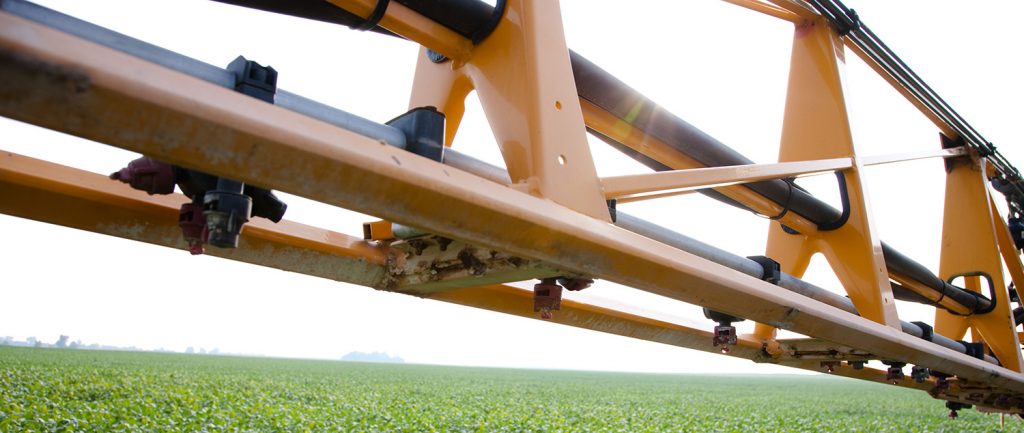Nothing gives a Minnesota soybean grower heartburn like driving by their soybean field and seeing it peppered with weeds. And when the big bad wolf of weeds – waterhemp – rears its ugly head, blood pressures are bound to rise.
This growing season, experts are encouraging soybean growers to consider incorporating a pre-emergent herbicide into their crop protection plan to fight pesky weeds.
“In the past, pre-emergent herbicides were key to weed control,” said Minnesota Soybean Research & Promotion Council (MSR&PC) Director of Research David Kee. “With the advent of Roundup Ready technology, they were pushed to the back burner. Now, many weeds have developed resistance to Roundup and growers struggle to control them.”
Once weeds have overrun a field, regaining control can feel like climbing Mt. Everest, so the sooner growers can get on top of weed management, the better.
“Biologically speaking, weeds are weakest at the point of emergence,” said Andrew Lueck, owner of Next Gen Ag, an independent agricultural contract research company located in Renville. “When they’re tiny seeds, they have low energy and low carbohydrate reservoirs so when they do get out of the ground, that’s all they really have energy for. So, when you apply these pre-emergent herbicides, the chances of developing resistance are much lower.”
That’s why Kee advises Minnesota soybean growers to consider switching up their crop protection plans to include a pre-emergent and keep weeds on their toes.
“What we have found is that on all post-emerge systems, where it’s just post-emerge alone, we build up resistance rapidly,” Kee said. “With a pre-emerge and a post-emerge combined, we really slow the development of resistance.”
There are many pre-emergent herbicide options available, so growers who are interested in applying a pre-emerge should reach out to their agronomists and chemical reps for more information.
“There are probably thirteen or fourteen pre-emergent active ingredients that are available for soybeans,” said Lueck, whose research is supported in part by the soy checkoff. “There are a lot more products on the market but really only about that many active ingredients.”
Along with using more than one pre-emerge active ingredient, Lueck recommends taking the lifespan of the product into account.
“Pay attention to the longevity of the active ingredient that you’re using,” Lueck said. “Some are going to be activated quicker with rainfall, but they stick around shorter; you’ve got some mid-residuals and you’ve got some long residuals. If you’re going to use more than one active ingredient, it’s beneficial to be able to layer those such as using a short residual that’s activated by a few tenths of rain and pairing that with a mid to long residual herbicide to get that long under canopy coverage throughout the season.”
When applying pre-emerge, Lueck’s advice is to not sweat the nozzle size being used.
“Nozzle selection doesn’t matter too much as long as those droplets are getting to the ground,” Lueck said. “So, if you use a finer nozzle for a foliar, like for an insecticide or fungicide spray where you’re trying to get fine droplets and fog it, all you’re doing is increasing your risk of drift with pre-emergence. So, having a coarse textured nozzle is just fine because you’re not using contact herbicides.”
Implementing a pre-emergent herbicide may be a new endeavor for many growers and the price tag may deter them, but it could be the ticket in the long run to controlling bothersome weeds.
“I know pre-emergent can get expensive, but I’d rather put two thirds of my money up front to get those weeds when they’re susceptible and emerging versus putting two thirds of my money on the back end hoping my post-emergence herbicide can kill an already six-inch-tall weed,” Lueck said.
There’s no denying that weed resistance causes a lot of headaches. That’s why MSR&PC, which is tasked with directing Minnesota soybean checkoff dollars to increase farmer profitability, invests resources into agronomic research that can help growers combat weeds.
“Investing in this research allows farmers to do a better job with their weed control packages,” Kee said. “It allows them to develop some flexibility in their package which they can tailor to their farm.”







